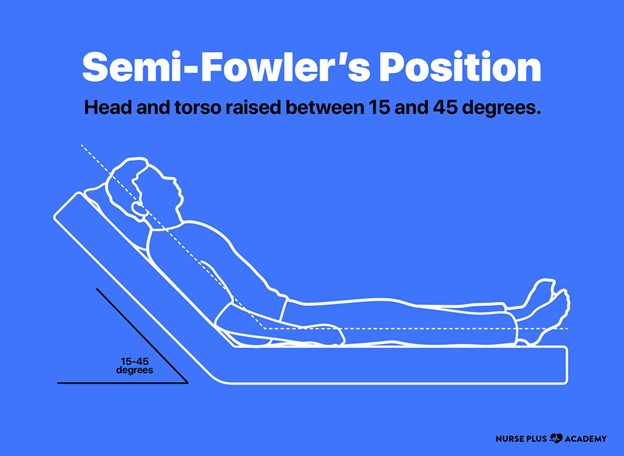An 8-year-old patient with status asthmaticus insists on sitting straight up in bed. Which action should the nurse take?
Allow the patient to stay in the position the child has chosen.
Explain to the patient why semi-Fowler's is a more therapeutic position.
Demonstrate a variety of positions to the patient.
Remove the pillows from the patient's bed.
The Correct Answer is B
Choice A rationale:
Allowing the patient to stay in the chosen position might not be the best approach, as the child's preference might not align with therapeutic considerations for managing status asthmaticus.
Choice B rationale:
Semi-Fowler's position, with the head of the bed elevated, promotes improved lung expansion and easier breathing for patients with respiratory distress. Explaining the rationale behind this position to the child helps them understand its therapeutic benefits, encouraging compliance.
Choice C rationale:
Demonstrating various positions could confuse the child and delay appropriate intervention. A clear explanation of the preferred position is more effective in this critical situation.
Choice D rationale:
Removing pillows might be counterproductive, as elevating the head of the bed is beneficial for respiratory distress. This choice contradicts the therapeutic goal.

Nursing Test Bank
Naxlex Comprehensive Predictor Exams
Related Questions
Correct Answer is B
Explanation
Choice A rationale:
Allowing the patient to remain in the chosen position is inappropriate as the patient's position indicates distress. This choice should not be chosen.
Choice B rationale:
Placing the patient in semi-Fowler's position is the correct action. This position optimizes lung expansion and promotes easier breathing, which is crucial in managing status asthmaticus.
Choice C rationale:
Administering 100% oxygen via a face mask might be necessary eventually, but optimizing positioning takes precedence. Semi-Fowler's position should be established first.
Choice D rationale:
Encouraging consumption of cool, clear fluids is not the immediate priority in managing status asthmaticus. Respiratory support and positioning are more crucial.
Correct Answer is C
Explanation
Choice A rationale:
Waiting to discuss the surgery until the child asks specific questions might lead to increased anxiety as the child may be apprehensive about the surgery but unable to express their concerns.
Choice B rationale:
Setting aside an hour a day to talk about the child's feelings concerning the surgery can be overwhelming for a 5-year-old, potentially increasing anxiety and making the procedure seem more daunting.
Choice C rationale:
Reading the child a story about children of similar age who go to the hospital for surgery provides a developmentally appropriate approach. It helps the child understand the process through relatable characters, reducing fear and uncertainty about the upcoming experience.
Choice D rationale:
Having the child visit a family whose preschool child has just been discharged from the hospital might expose the child to unfamiliar situations, possibly leading to more confusion and anxiety.

Whether you are a student looking to ace your exams or a practicing nurse seeking to enhance your expertise , our nursing education contents will empower you with the confidence and competence to make a difference in the lives of patients and become a respected leader in the healthcare field.
Visit Naxlex, invest in your future and unlock endless possibilities with our unparalleled nursing education contents today
Report Wrong Answer on the Current Question
Do you disagree with the answer? If yes, what is your expected answer? Explain.
Kindly be descriptive with the issue you are facing.
